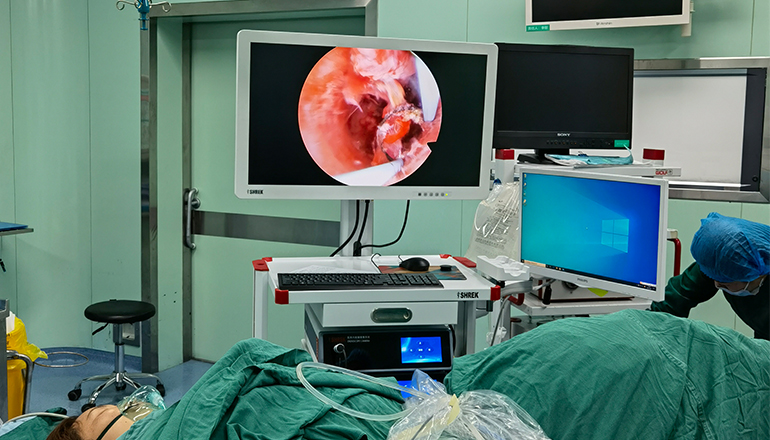- Shanghai, China
- [email protected]
- +86-21-58189111
Hysteroscopy is a minimally invasive surgical procedure that involves the insertion of a hysteroscope, a thin tube with a camera and light, through the cervix and into the uterus. The hysteroscope allows the surgeon to view the inside of the uterus and perform surgical procedures with specialized instruments. Here is an introduction to some of the commonly used hysteroscopy surgical instruments:
Hysteroscope: A hysteroscope is a thin, lighted tube that is inserted through the cervix and into the uterus. It allows the surgeon to visualize the inside of the uterus and guide the surgical instruments.
Resectoscope: A resectoscope is a hysteroscope that has an electrically powered wire loop that can be used to remove tissue from the inside of the uterus. The loop is heated and used to remove or vaporize tissue, such as polyps or fibroids.
Myoma screw: A myoma screw is a specialized instrument used to manipulate the position of fibroids during hysteroscopy surgery. The screw is inserted into the fibroid and used to hold and manipulate it during the procedure.

Biopsy forceps: Biopsy forceps are small instruments used to take tissue samples from the inside of the uterus. The forceps are inserted through the hysteroscope and used to remove a small amount of tissue for examination.
Graspers: Graspers are long, thin instruments used to grasp and manipulate tissue during hysteroscopy surgery. They can be used to hold and move tissue, such as polyps or fibroids, so that the surgeon can perform the surgical procedure.
Scissors: Scissors are used to cut or remove tissue during hysteroscopy surgery. They can be straight or curved, and can be used to remove tissue, such as polyps or fibroids, or to cut adhesions.
Electrodes: Electrodes are used to remove tissue during hysteroscopy surgery. They can be monopolar or bipolar and are used to remove or vaporize tissue, such as polyps or fibroids.
Suction and irrigation system: A suction and irrigation system is used to remove fluids and debris from the uterus during hysteroscopy surgery. It is also used to introduce fluids, such as saline, into the uterus to improve visualization.
In summary, hysteroscopy surgery requires specialized instruments to perform surgical procedures in the uterus. These instruments include a hysteroscope, resectoscope, myoma screw, biopsy forceps, graspers, scissors, electrodes, and a suction and irrigation system. These instruments allow the surgeon to visualize the inside of the uterus and perform a variety of surgical procedures.
Leave a Comments